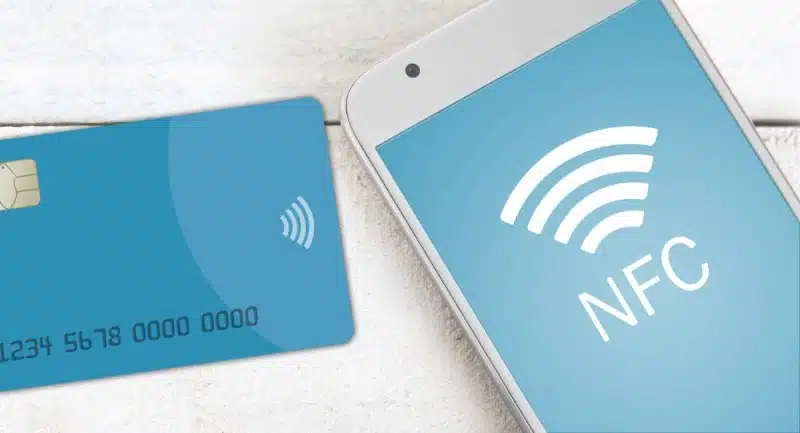Contactless payment could be the biggest digital payment trend in Nigeria in 2025. Banks and fintechs are rolling out solutions ranging from issuing contactless payment cards to eliminating the need for physical cards altogether.
Access Bank and Sudo Africa have launched solutions that fall into the latter category. On March 7, 2025, Access Bank launched Tap to Phone, in partnership with Visa. The feature eliminates the need for a POS terminal and provides merchants with a more affordable way to receive digital payments.
The bank stated that the feature will transform an NFC-enabled Android phone into a POS terminal simply by downloading an app. Customers will be able to tap their cards or payment-enabled devices against a merchant’s phone to make payments.
Similarly, Sudo Africa introduced Digital First Cards, a solution that eliminates the need for physical cards by allowing customers to use their phones for contactless transactions.
A key advantage of this solution is its potential to significantly cut the cost of issuing physical cards. Digitised cards reduce card issuance costs by over 77%, from ₦1,800 ($1.70) to ₦400 ($0.26), Kabir Shittu, Co-founder and COO of Sudo Africa, tells Techpoint Africa.
Sudo Africa has been providing physical and virtual card issuance services to financial institutions since its launch in 2020. According to Shittu, the cost of issuing cards has been rising steadily since the COVID-19 pandemic.
How the global chip shortage is driving up costs
Beyond the naira’s depreciation, the primary factor behind this increase is the global chip shortage, which began in 2020 due to supply chain disruptions caused by the pandemic.
Lockdowns and factory closures led to a halt in semiconductor production, while soaring demand for consumer electronics such as laptops, gaming consoles, and smartphones further strained supply. As industries scrambled to secure chips, payment card manufacturers were deprioritised, exacerbating the shortage.
This crisis has had wide-ranging effects across multiple sectors, from automotive manufacturing to banking. “We started noticing the chip shortage around 2020. At that time, producing a card cost about ₦600. But by 2021, the price had increased to ₦800, then ₦1,200, and now it’s as high as ₦1,800 per card,” Shittu explains.

Let the best of tech news come to you
Join 30,000 subscribers who receive Techpoint Digest, a fun week-daily 5-minute roundup of happenings in African and global tech, directly in your inbox, hours before everyone else.

Don’t miss out on Africa’s financial revolution
Keep up with the rapid pace of innovation in Africa’s fintech landscape with Fintech Today. Designed for quick consumption, our exclusive newsletter, trusted by over 1,000 industry leaders, delivers the latest insights, trends, and breakthroughs right to your inbox.
According to an NPR report, credit card issuance delays in the United States increased from 10 days to six months due to chip shortages. Nigerian issuers, including Sudo Africa, have also faced similar delays.
Shittu emphasises that digitised cards enable financial institutions to issue cards instantly, eliminating not only the cost of physical card production but also delays and logistics expenses.
“The idea is to turn your phone into the card. You can digitise your card on your phone and use it anywhere,” he says. “For a three-year card lifecycle, a bank would spend about ₦1,900 to ₦2,200 per physical card. But with digitised cards, they won’t spend more than ₦400.”
How digitised cards work
Sudo Africa’s digital card solution integrates seamlessly with banks and fintech applications via an SDK (Software Development Kit).
“The SDK allows any financial institution to issue digital cards instantly. You just need to integrate the SDK into your mobile app, and instantly, you can issue a card or even convert a physical or virtual card into a digital card.”
These digital cards are securely stored in the cloud not on a device. When a customer initiates a transaction, a temporary encryption key is generated to authorise the payment without exposing sensitive card details.
This method enhances security, ensuring that even if a device is compromised, fraudsters cannot access stored card information. “Unlike physical cards, which can be stolen or cloned, digitised cards generate dynamic CVVs for each transaction, making fraud virtually impossible,” Shittu adds.
For transactions, customers can use their digital cards in two ways: NFC-based tap-to-pay for compatible smartphones, or QR code payments for devices without NFC capabilities. Merchants can accept payments using either NFC-enabled POS terminals or by scanning customer-generated QR codes. “This means even merchants without NFC-enabled POS systems can still accept payments. We’ve built it to work for as many users as possible,” Shittu explains.
Challenges to adoption
While contactless payments may be the biggest digital payment trend in Nigeria this year, several factors will determine their widespread adoption.
On the infrastructure side, Sudo Africa’s QR code solution offers an alternative for merchants and customers without NFC-enabled devices. However, Michael Oluwole, Co-founder of Touch and Pay, believes that significant public education will be needed.
“You have to educate millions of people. Introducing new technology is the first phase; the next phase is the change management, which is a lot of work.”
Touch and Pay’s contactless Cowry cards are used by almost five million people in Lagos for payments on BRT buses, and Oluwole notes that people often require extensive sensitisation even when minor changes are made to their usual payment methods.
He also pointed out that for contactless payments to gain traction, they must offer clear advantages for both merchants and customers over existing digital payment options.
This perspective aligns with the Technology Acceptance Model (TAM), a research framework that suggests that a user’s adoption of new technology is influenced by their perception of its usefulness and ease of use, which shape their attitude and intention to use it. With contactless payments saving only a few seconds compared to existing digital methods such as bank transfers and card transactions, the question remains: is the hype justified?
